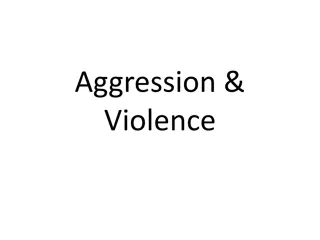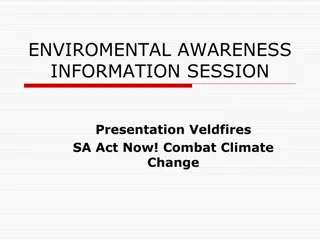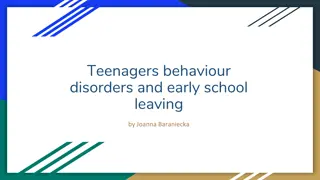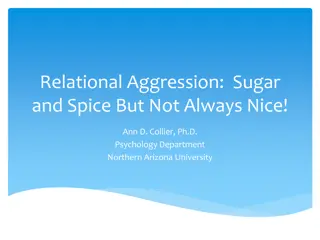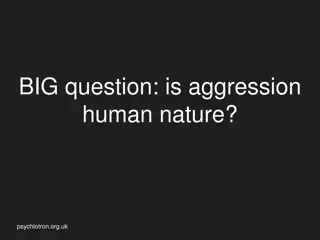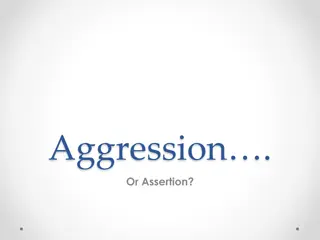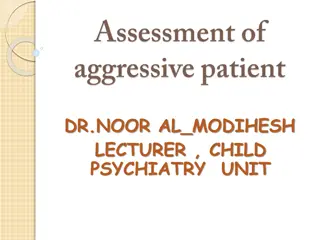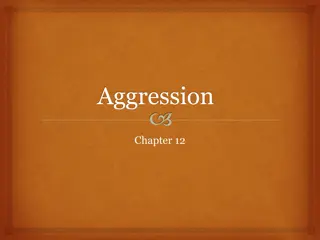Understanding Aggression: Causes and Solutions
Aggression is any intentional behavior aimed at harming others, whether physically, verbally, or emotionally. It can be instrumental or hostile. Biological factors like hormones and neural substrates, social/cultural factors such as frustration and provocation, and environmental/situational factors contribute to aggression. Understanding the roots of aggression is crucial in addressing and reducing it. Factors like violence in the media and personal traits also play a role. Strategies for reducing aggression include punishment, teaching nonaggressive behaviors, and promoting empathy and forgiveness.
Download Presentation

Please find below an Image/Link to download the presentation.
The content on the website is provided AS IS for your information and personal use only. It may not be sold, licensed, or shared on other websites without obtaining consent from the author. Download presentation by click this link. If you encounter any issues during the download, it is possible that the publisher has removed the file from their server.
E N D
Presentation Transcript
OUTLINE A. What is Aggression? B. Explanations of Aggression 1. Biological Factors 2. Social/Cultural Factors Environmental/Situational Factors 3. Violence and the Media 4. Reducing Aggression
What is aggression? Aggression is any behavior that is intentionally directed at harming another individual or individuals, whether or not it actually does hurt the intended victim. It can be verbal, emotional, or physical. Aggression can be instrumental. The actions are intended to hurt others but only for a specific purpose it is a tactic desired to produce a desired outcome (eg. spanking). Aggression can also be hostile.
Explanations of Aggression Biological Factors Neural Substrates Hormones Testosterone
Social/Cultural Explanations Frustration Frustration aggression hypothesis (Dollard et.al) States that i) Frustration always leads to some form of aggression ,and ii) aggression always stems from frustration. This theory states that frustrated persons always engage in some type of aggression. Direct Provocation Any physical (assaults), verbal (criticism, sarcastic remarks) Displaced aggression Aggression against someone other than the source of strong provocation.
Environmental/Situational Factors Pain and Discomfort Frustration Alcohol High temperature Direct Provocation Presence of Aggressive Objects
Personal factors Type A behavior pattern- High levels of competitiveness ,time urgency, and hostility. Narcissism Ego threat Gender differences
VIOLENCE AND TELEVISION A. Incidence B. Effects 1. Learning of aggressive attitudes and behaviors 2. Desensitization 3. Fear C. Moderating Factors: The Context of TV Violence D. The National Television Violence Study E. Reducing TV Violence
REDUCING AGGRESSION Punishment (Biological Intervention) Teaching Nonaggressive Behavior (Frustration- Aggression View and Social Learning View) Censoring Modeling Skills Training Incompatible Responses Apologies and Forgiveness(Cognitive Intervention)
Catharsis Catharsis is the process of venting aggression as a way to release or get rid of emotions. Opportunity to express aggressive impulses in relatively safe ways. Have you ever been so angry that you went outside and yelled or hit a pillow? For example, if you are angry you might hit something or scream, and that might make you feel better. This method is called catharsis.








